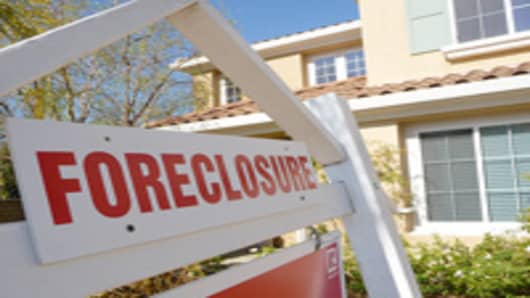Let’s face it. There are so many opinions as to why the economy isn’t creating jobs in this recovery—and when non-farm payrolls will finally turn positive—that impatience may be on the verge of becoming exasperation.
Historical precedent from previous recessions is failing as a guide; government intervention in the private sector and labor market has disappointed or failed, depending on one’s political sympathies; and there’s a glut of next-step solutions with a paucity of consensus about any of them.
Welcome to the recovery that everyone loves to hate.
“This was a longer and deeper recession than average, so a certain amount of impatience is understandable,” says Dan Mitchell of the Cato Institute.
“I don’t think things are going to unfold in the right direction as everyone hopes,” says veteran economist David Jones.
“It’s going to very difficult to find something [on job creation] at this stage of the game that appeals to both parties,” says Bill Frenzel, who served ten terms in Congress and is now with the Brookings Institution.
Are we feeling good yet?
Though there’s no official pronouncement yet, based on private sector economists, the recession ended in either May, June, July or August. Since then, the economy has lost 350,000 jobs, at the least; 1.3 million jobs, at the most.
At the same time, the optimists have been forecasting an increase in non-farm payrolls as early as December; others have been saying February or March is more likely. (Forget about January, as the government today reported that payrolls fell another 20,000.)
“Payrolls jobs come back quicker than you think,” says Bank of Tokyo-Mitsubishi economist Chris Rupkey, whose forecast falls somewhere in the middle, but later adds. “If they (employers) are not hiring by June, then we have a real problem.”
Indeed. Even though it took that long or longer after the last two recessions, it’s of little consolation to people, particularly to those among the 9.7 percent of the workforce now unemployed.
Payrolls didn’t increase until two years after the 2001 recession and about a year after the 1991 one. In both of those eight-month recessions, however, the jobless rate never came close to what it is today.
“The difference this time is that the payroll cuts have been much bigger," says Ram Bhagavatula, of the hedge fund Combinatorics Capital.
Since December 2007, the official end of the last economic expansion, about 7 million jobs have been lost.
“Given that you should have seen an increase in payrolls by now,” adds Bhagavatula. “How strong is a different question.” (Bhagavatula, by the way, thinks the economy and job growth will be on a sustainable track by June.)
In the last deep and long recession, 1981-1982, the economy started adding jobs two months after the recession officially ended. A year later, payrolls were almost 3-million higher. Even more strikingly, the jobless rate was even higher at that time.
Back then, “we got into a recession because the Federal Reserve raised interest rates, and then lowered them. You can’t lower interest rates this time. They’re as low as they can go," says Dean Baker of the Center for Economic and Policy Research. “This is a recession caused by a collapse of a bubble. We don’t have the basic dynamism we had.”
Lost in the swirl about jobs ands this recovery is that in some ways it’s a continuation of a decade-long trend. There are approximately 100,000 more jobs today than there were in January 2000. (Some 8.2 million jobs have been erases since rthe recession began in 2007.) By comparison, some 20 million jobs were created in the expansion of the 1990s.
Three Strikes
Economists like to say that every recession is different, but this economic cycle may give rise to the corollary that every recovery is different.
And the most recent cycle appears to be in a league of its own.
“Balance sheet recessions are harder to get out of,” says Jones, who is one of the few to remember that the 1990-1991 one was described as such. “Whenever you have a banking or financial crisis, as opposed to a high-tech bubble, you’re getting a lot of deleveraging. Banks aren’t lending. Consumers aren’t borrowing.”
Economists say there’s a close connection to job growth—or the lack thereof—and a lot of different factors now extant in the econony.
“Interest-rate sensitive sectors have excess inventory,” says Bhagavatula, pointing to housing and autos. Both sectors typically saw enormous production and hiring coming out of past recessions, notably those of the 1970s and 1980s.
“You've lost residential construction," says Baker. “It won’t come back for years.” The National Association of Home Builders happens to share that assessment.
In other words, don’t expect much, if any job creation from housing and autos.
Economists also point to the deteriorating finances of state and local government, and a continuing spate of layoffs, even though the federal government’s stimulus package has provided billions of dollars in support.
“It’s going to be ugly," says Baker.
That’s two very powerful structural forces blowing against job creation.
Add to that a retail sector with a significantly slower rate of growth, thanks to a new era of consumer frugality.
Big Problem, Big Government?
Woe In Washington
Democrats and Republicans alike have been fanning the flames, reminding voters how bad things are, in case they hadn’t already noticed.
"They are both complaining vigorously," says Frenzel. "That isn't doing rational policy any good."
Major new initiatives for health care, financial sector regulation and energy are not only dividing the Congress, often on party lines, but creating procedural delays that are adding to uncertainty for business about its future cost structure—a major consideration in hiring decisions.
The two parties are also in disagreement over job creation efforts. The Obama administration and Congressional Democrats are pushing a number of new measures, but Republicans are resisting. Even in the pro-intervention camp, there’s little agreement over what to do.
Critics on both sides of the political aisle question the wisdom of government-funded jobs, tax incentives for new hires and infrastructure spending.
Others would have a fresh round of income tax cuts—and on a broader basis—to stimulate demand, which the Obama administration has already done through its Cash for Clunkers and homebuyer’s tax credit programs.
In more than a few quarters expectations are low.
"There isn’t much government can do," says Rupkey, "Short of shoveling money out to the states and local governments so they don’t fire workers."
At the same time, doing nothing in a mid-term election year is not an option.
"The Republicans are in a little less trouble because they are not in the majority, but as incumbents they are imperiled in a lot of the ways the Democrats are." says Frenzel of Brookings.
Nevertheless time is running out for both the economy and the government.
Each passing month without job creation fuels the pessimists who say a double-dip recession is still a possibility.
Putting millions back to work will take above-trend economic growth and years of hiring.
Even the Office of Management and Budget has a rather dour view, predicting an unemployment rate of 8.2 percent two years from now.
Are we feeling good yet?




